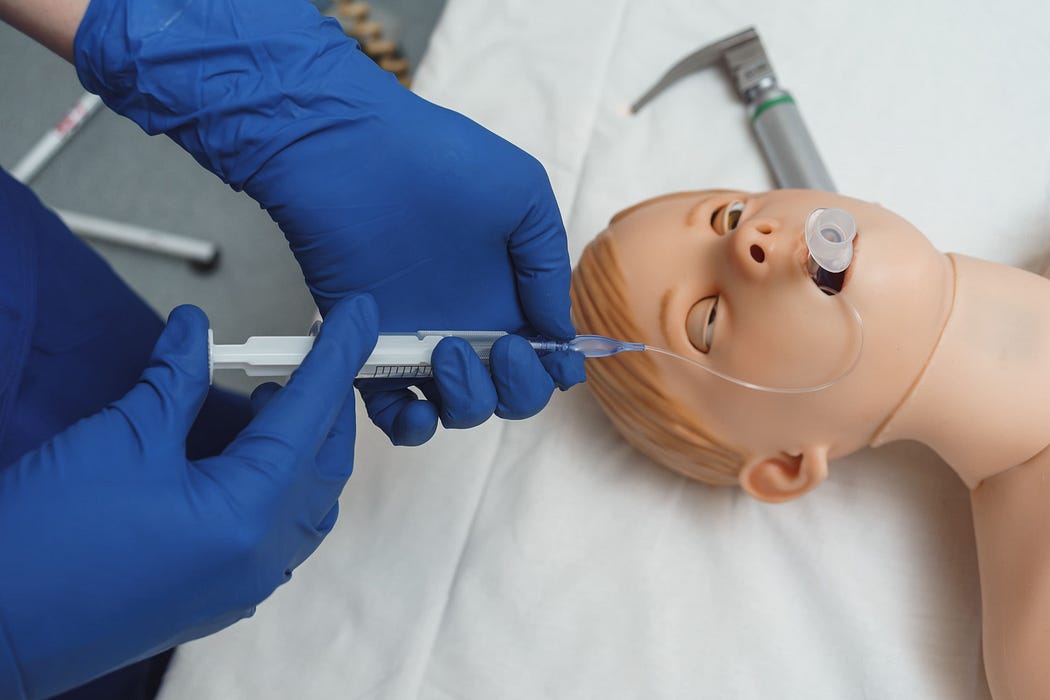Pediatric Healthcare Training with Infant IV and Pediatric Trainers
Medical professionals, whether nurses or doctors, need specialized training to ensure they are prepared for the unique challenges posed by pediatric patients. One of the most crucial procedures that require precision is intravenous (IV) therapy. However, performing IV insertions on infants and young children can be extremely difficult due to their small veins and delicate skin. To provide healthcare professionals with the proper training and hands-on experience, innovative training tools like the Infant IV Arm Trainer, Infant IV Leg Trainer, and Pediatric IV Arm Trainer are now essential in medical training programs.

Infant IV Trainers: A Necessity in Pediatric Healthcare
Infant IV trainers are an invaluable asset to healthcare providers working with infants and young children. The Infant IV Arm Trainer and Infant IV Leg Trainer are designed to simulate realistic scenarios for pediatric IV therapy. These trainers help medical professionals practice inserting IV lines into the small veins of infants, enhancing their skills before they perform the procedure on real patients.
The Infant IV Arm Trainer is specifically created to replicate the anatomy of an infant’s arm. With lifelike veins, the trainer allows practitioners to practice intravenous insertion in the same way they would on a real infant. The arms of the trainer are soft yet durable, providing a true-to-life experience. Healthcare professionals can practice various techniques, from the simple insertion of a needle to more complex procedures such as catheter placements. By working with these trainers, professionals can gain more confidence and expertise, which ultimately leads to better patient outcomes.
On the other hand, the Infant IV Leg Trainer serves as a crucial alternative when working with infants whose veins may be harder to access in the arms. This trainer is designed to provide the same level of realism and detail as the IV arm trainer but focuses on leg-based IV procedures. It is particularly beneficial in cases where intravenous access is more easily achieved in the leg, such as when the veins in the arms are difficult to locate or unsuitable for treatment.

The Importance of Pediatric IV Arm Trainers
Pediatric patients have veins that are much smaller than those of adults, and inserting an IV can be daunting. The Pediatric IV Arm Trainer offers a solution for medical practitioners to hone their skills in pediatric intravenous therapy. These trainers provide lifelike simulations of a child’s arm, featuring veins that are small, deep, and challenging to locate, mimicking the conditions encountered during pediatric IV insertion.
The Pediatric IV Arm Trainer helps medical students, nurses, and doctors familiarize themselves with pediatric anatomy. It allows them to learn how to work with a child’s arm veins before attempting the procedure on real patients. This critical learning tool ensures that medical professionals are equipped to handle the stress and challenges that come with pediatric intravenous procedures.
Benefits of Using IV Arm and Leg Trainers in Pediatric Healthcare
- Realistic Training Experience: One of the most significant advantages of using Infant IV Trainers is their lifelike quality. These simulators replicate the size and condition of infant and pediatric veins, allowing for more realistic and effective practice. As a result, healthcare providers can develop fine motor skills and the confidence to perform IV insertions accurately and safely.
- Improved Patient Safety: Practicing these trainers means that professionals can avoid making mistakes during real procedures. Mistakes in pediatric IV procedures can lead to complications such as incorrect placements, vein damage, or bruising. By using infant and pediatric IV trainers, medical professionals can learn to minimize errors, ensuring better patient safety and outcomes.
- Skill Development and Confidence: Repeated practice with Infant IV Arm Trainers and Pediatric IV Arm Trainers enhances muscle memory and technical proficiency. These trainers allow practitioners to gain confidence in a low-risk environment, where they can make mistakes, learn from them, and refine their skills.
- Versatility for Different Scenarios: Various IV trainers, such as the Infant IV Arm Trainer, Infant IV Leg Trainer, and Pediatric IV Arm Trainer, allow healthcare providers to simulate different IV access points and vein conditions. This versatility allows for thorough preparation, ensuring that practitioners are ready for a wide range of situations in pediatric care.
- Time and Cost-Efficiency: Training with Infant IV Arm Trainers reduces the need for repeated training on live patients, which can be costly and time-consuming. By utilizing these realistic trainers, healthcare facilities can save time and resources while still providing top-notch training to their staff.

The use of Infant IV Trainers and Pediatric IV Trainers represents a crucial development in the training of medical professionals. These tools provide practitioners with an opportunity to master the difficult skills of pediatric IV therapy in a safe and controlled environment. By improving the accuracy, confidence, and technical skills of healthcare professionals, these trainers ultimately contribute to better care and improved outcomes for infants and children requiring IV therapy. For anyone involved in pediatric healthcare training, investing in Infant IV Arm Trainers, Infant IV Leg Trainers, and Pediatric IV Arm Trainers is not just an option — it’s a necessity.
For more information

Comments
Post a Comment